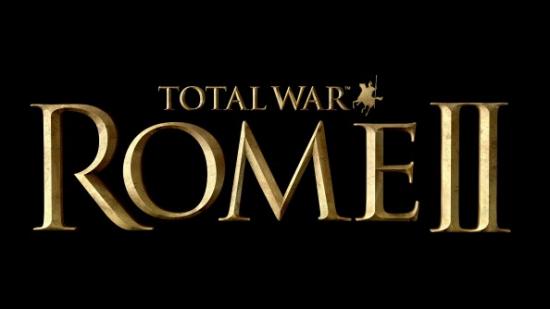Rome II is ambitious. But to capture that civilization in a game..? To take that marvellous complexity at every level, to simulate that..? That’s yet more ambitious. We spoke to the team at Creative Assembly, specifically the Lead Designer James Russell, and got an extended demo of the siege of Carthage, the final act of the Third Punic War.
Know this: Total War: Rome II is huge, spectacular and beautiful. Total War N has gathered together every piece of information, every fact going in one place. So enjoy: this is Rome 2.
Rome! The greatest civilization the world has ever known! Rome! Sadistic empire, failed republic! Rome! Expansionary, pious, arrogant, defensive, atheistic, civilizing, philosophical, brutal, and especially contradictory… As Edward Gibbon, that unparalleled historian of the Roman Empire, put it, “After Rome has kindled and satisfied the enthusiasm of the Classic pilgrim, his curiosity for all meaner objects insensibly subsides.” Little wonder that a sequel to Rome: Total War was the most-demanded game from Creative Assembly’s fans; little wonder that they’re making it. Yes, we’ve seen Total War: Rome II and we’re going to tell you all about it.
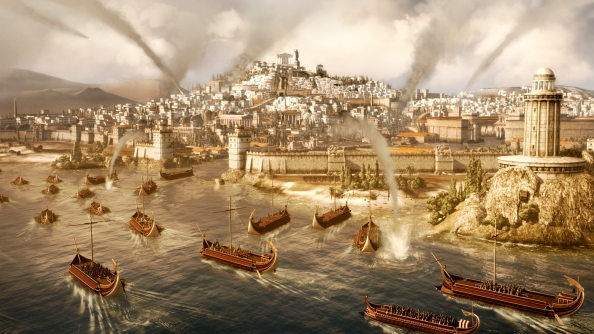
What factions are in Rome 2?
“One of the issues with Shogun 2 is that, although we’ve got lots of factions, because it’s set in one country it can’t offer the spectacular variety that we can deliver with Rome 2” explains an upbeat James Russell, Lead Game Designer on the Total War series. And that spectacular variety that he’s offering comes from not only an expanded map that incorporates some of the exoticism of the east, but also from a deeper look at the factions and cultures that dwelled in them.
“We talk about different cultures and what that means is different fighting styles and different tactics, different environments.” So you’ll have the pesky Gauls and Germanic tribes to the North, the ever threatening Carthaginians and Egyptians to the South and assorted Parthians, Dacians, Cappadocians and more to the East. And other Romans. “We really want to push that variety in different ways, with variance in tech trees for barbarian cultures, and other cultures as well.”
It’s not just the tech tree that’s getting an overhaul. The cities and landscapes you’ll fight across will vary according the faction that controls them. “You’ll have barbarian cities that vary in size, and eastern cities, and greco-roman cities that will all be different.” The Carthage we were shown in the demo, in all its incredible splendour, is “kind of a boss battle; you’re storming the capital of a large empire, and that’s pretty much the biggest city that you’ll get to see.” More on which later.
How are Creative Assembly improving the AI?
Sadly, the biggest concern that any player of Total War has would be about the AI. Despite (or perhaps because of) the way that Creative Assembly has generated their deep, complex worlds, the AI has never quite managed to keep up. Every generation of the game has thrown up new challenges – and the old ones have not always been fixed.
Look at the way that the campaign AI behaves in Empire; schizoid and strange, flitting between being your best friend or your most opportunistic enemy. Look at Fall of the Samurai, where the hard campaign AI simply cheats, using the factions as disposable pawns. Nor is the battle AI perfect – there’s a reason that the DarthMod is the most popular mod for each and every Total War game.
Rome 2 comes with an ever greater focus on AI from Creative Assembly. Firstly, they’ve added more AI staff, including designers, so they can work on helping the AI to understand the battlefield and city environments.
Secondly, they’ve repaired the long-standing problem of the divided AI. Previous Total War games included two separate AIs; one for diplomatic relations and one for the actual campaign map. “By combining these systems we’ll hopefully be able to give the player some warning about these things,” explains Russell, “so you might be able to spy on the AI, and see it thinking about double crossing, building up forces about to attack you. Because these systems are integrated we can explain to the player not just the stuff to do with diplomatic relations, but also give you a reason. It’s not just it won’t do a trade agreement because you’re -83 diplomacy, but because strategically, it wants that region of yours and therefore it’s just not going to make a trade agreement with you. And it makes it more human, so that there’s real thinking going on behind it.”
Finally, the AIs will have their own unique personalities. Like Civilization, you’ll come to realize that certain AIs have different personalities and can be treated in different ways. “We acknowledge that AI is a key part of making the world believable and fun to play. We also want to make them more human and personality-driven; for example, those guys are vengeful, so you don’t want to piss them off because they’ll kick you back, whereas another AI might be more realpolitik and look at the bigger picture.” That’ll be even more given that Russell hints at something similar to Fall of the Samurai’s Realm Divide mechanic for the Roman factions – Empire or Republic seems like a likely choice.
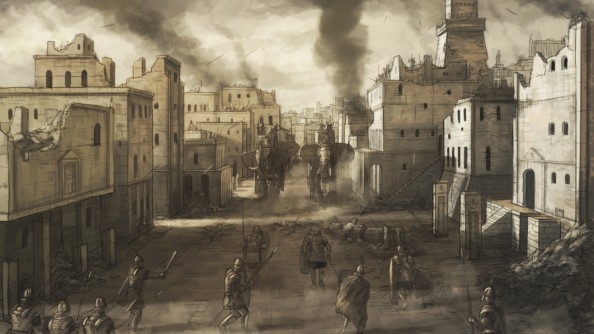
How has Total War learned from RPGs?
It’s likely that choice of ending will be shaped and constrained by the dilemma system, if it’s not a fundamental part of it. A branching dilemma system will challenge players to make hard choices as their campaigns progress. It’s about bringing more flavour and colour into the world of Total War. The system is built upon some of the choices players make in Shogun 2’s expansion: Fall of the Samurai.
Instead of just getting the occasional choice, now you have entire flow charts to navigate based on your own moral choices, chaining off and splintering depending on your actions. “It’s almost interactive storytelling in a way. We want to have chain dilemmas so that this choice will take you down this path, and that will create different choices as a result of that. It’s human level drama woven into the campaign map.” If those choices reflect how dictatorial or egalitarian you are, then that may build into your eventual choice between Empire and Republic – a very familiar systems from RPGs like Mass Effect.
How much is Total War: Rome II going to be character-driven?
This diversified AI ties into an increased focus on characters within your and your enemies armies. The Siege of Carthage demo we saw was partially shown from the point of view of one Scipio Aemilianus. He led from the front, surviving catapult barrages, hand-to-hand combat and a run in with an elephant.
What’s clear is that the characters have become much more of a focus, injecting much more personality into a series that has always run the threat of becoming a little too dry.
Aemilianus has been mo-capped and features in several cutscenes throughout the battle – but Russell left us unclear whether this was just for the purposes of the demo, or was a fundamental shift in how Creative Assembly tells stories.
Though Russell avoided questions about other historical characters appearing in the game, others we spoke to didn’t; the PR Manager admitted to being mo-capped as the republican hero Tiberius Gracchus, whilst the lead art designer talked about the difficulty of modelling Cleopatra and Caesar, and others talked fondly about Creative Assembly’s new motion-capture studio, the biggest in Europe.
How has the campaign map changed?
The Rome II reveal demo didn’t include anything from the campaign map, and Creative Assembly were tight lipped on details. But James did explain that it would be larger than previous maps, and that the countries of old would be split into smaller provinces.
The Provinces provide a bridge between the grand size of countries and the micro-management of regions. The campaign map can therefore be as large as you’d expect from Rome, but include the detail of Shogun without overwhelming you with detail.
“We want to take steps to reduce some of the management burden. So, for instant, we have a province system where you’ve got several regions making up one province. That means you have all the benefits of extending that map and making it huge, increasing the area for you to conquer with your armies, but at the same time you don’t have hundreds of regions to manage with your tax and development.”
The way they’re going to work is to have one ‘capital’ region at the centre of more agricultural and production-focused areas. Now, when invading a region, you can choose what you want to deny your opponent, rather than charging blindly at your opponent. The ultimate goal is to prevent the endless run of sieges of previous Total War games, and hopefully encourage more fighting in the open countryside.
“When you’ve got big regions what that means is that you tend to headshot the capital and suddenly get one big swathe of territory,” says James. “With provinces and provincial capitals, with quite a few surrounding regions, there’s territory to capture without just headshotting the capital. So you get more varied battles and more varied battle types over different terrain. It means you don’t want a couple of units going here and here, and we really want people to think about Legions.”
How can Legions be characters too?
Along with making the AI a force that you can understand and predict, Creative Assembly are also aiming their sights squarely on the troops you shuffle around their expanded map, turning them from just a mob of archers, infantry and cavalry into armies, and more specifically, Legions.
It’s another way for Rome 2 to push forward its “Human Face”. It’s a phrase that comes up time and again while talking to Russell.
“What we want the player thinking about is not ‘I’m going to move that archer unit and combine it with those two units of cavalry.’ We want the player to think ‘Where’s the Tenth Legion?’, or ‘The Eighth Legion has been in a battle, it’s weakened, let’s move up the Tenth to support it.’ We want the player thinking about the grand strategy with armies, not fiddling about individual units.” Importantly, this doesn’t mean simplifying the game, but instead bringing about more colour to your manoeuvrings. And it’s there that they’re putting a lot of effort in tying you to these Legions.
Legions will “gain traits and properties that outlive their general”, dependent on how they perform in battle, leaving you with a tracked history that “help unify that idea of Legions being an army. It also creates this institutional memory that isn’t just dependent on one character.” So while your generals will gain their own traits, your Legions will, too, becoming more fearsome, or more cowardly, depending on their victories and losses.
All of which spills over onto the battlefield, where the chaos of conflict is punctuated by a dozen moments where order pokes its head up in the form of a sudden peak of narrative coherence. In scripted, mo-capped moments, Scipio Aemillianus turns around and barks a concise encouragement to his men before they surge out of the siege tower, or the walls crumble, taking dozens of Carthaginians with them.
It’s about connecting the drama of battle with the grand strategy: having stories emerge from the situations your favoured generals and legions find themselves in; be them stranded in the Northern reaches of Gaul, or storming the walls of Carthage.
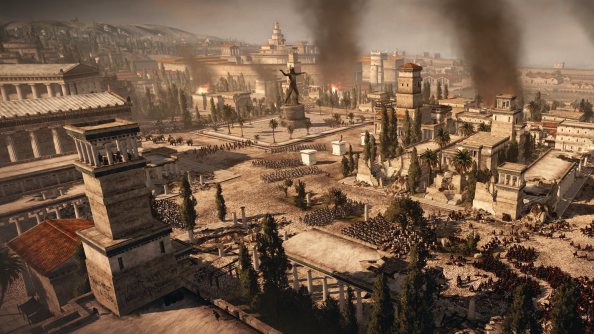
How are Creative building their cities?
We’ve hardly mentioned Carthage yet, but this is the jewel in the game’s crown. The battle is incredible.
Here seen for the first time in two thousand years, is the city of Carthage. Great stone walls run along the coastline to a leviathan harbour (the only part of the old city still extant). From the walls the city slopes gently up to the great hill, the houses getting more affluent as they close on the city’s ancient centre, the Bursa, the site of the citadel-temple where the Carthaginian general, his family and some die-hard Roman deserters made their last stand.
The city just dwarves the ships at anchor – and this mighty fleet might carry as much as a legion of troops, ready to reinforce the siege. A siege that’s been ongoing for three years, surrounding the 37KM of Carthage’s walls.
The history buffs out there will know that Carthage isn’t exactly in a fit state to model for the game; following victory in this battle the Romans killed all the men, enslaved the remaining 50,000 women and children, burned the city to the ground, reportedly sowed the ground with salt, before building a Roman town on the ruins. Before the battle, the Carthaginians had offered to surrender and had given up all their weapons to the Romans. After the battle, they didn’t exist as a people any more. The Romans even destroyed all their writing and slandered them in their histories, so we don’t know anything about them.
How did they recreate Carthage?
So, to make a map of the city of Carthage; to resurrect a dead people; to recreate a historical battle told only by the victors; these are all huge research challenges. Creative Assembly has overcome them by… reading lots of books. They have spent thousands of pounds on old books, they’ve pored over satellite photos, they’ve studied the nearby tombs of the Carthaginians (which were based on the city’s buildings) and they’ve looked at nearby cities that surrendered to the Romans.The cities themselves feel far more lived in than previous games; the streets of Carthage in the demo were covered in graffiti, and lined with litter and garbage. The streets were narrow and winding, dirty and grubby, the harbour contrasted mighty stone piers with dingy wooden fishermans’ jetties. The whole city felt like an ancient maze.
This kind of hand-crafted design will likely only apply to a handful of the more famous in-game cities – Carthage, Rome, perhaps Memphis. During the campaign, other cities could reach this size and they’ll be dynamically generated from tile sets, depending on their location, scale and culture – Carthage itself is a combination of African, Classical and Eastern buildings.
Has the scale changed?
The battles have a new sense of scale thanks to an increase in the size of units and the number of units you control. The assault of Carthage is a perfect demonstration of Rome II’s scope. The demo had all its orders preplanned, freeing CA up to just show us the best bits, swinging the camera down onto the gritty soldier level, but throwing a player into something of this scale can’t be an easy feat.
Carthage also demonstrates the changes coming to the series. There is now only one battle-type: battles are not split between sieges, naval battles and open field engagements. Naval units can be combined with infantry combat which can be combined with siege combat. Troops can be brought to shore, landed, set up siege towers, and then advance into a city – all while the navy bombards the city walls.
That’s exactly how the battle of Carthage progresses.
It starts with an amphibious assault; troops spilling out of a variety of Triremes and ancient landing craft. They surge forward, led by their general Aemilianus. They wind their way over the ruins of a long since flattened coastal town before taking hold of a series of abandoned siege towers. Aemilianus leads them onto the siege towers, and they begin to roll forward.
Meanwhile, at the harbour, the triremes are flinging huge boulders at the city walls, all while more and more troops are disembarking by the shore.But Carthage isn’t just waiting for the troops to arrive. A hail of flaming arrows and stones erupts, firing at both the incoming waves of troops and the boats that circle the harbour.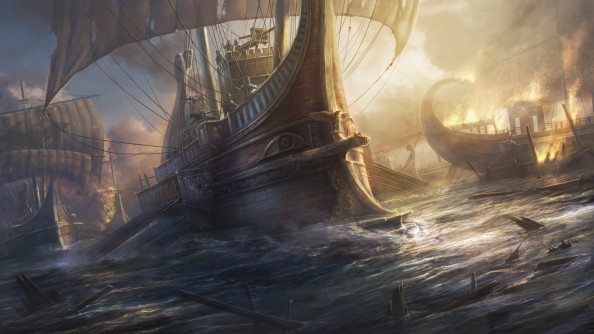
What about all these new camera modes?
A new cinematic camera, the equivalent of Supreme Commander’s epic zoom lets you pull right into the very heart of the battle, viewing the carnage from the perspective of Aemilianus. There, you can hear the shouts and grunts of individual soldiers, see your comrades fall as they’re pierced by the cloud of arrows.
“We understand that we have to give the player a proper incentive to get down there, it’s not just going to be eye candy. We’re still looking at exactly what we’re going to do, but what we can say is that the player’s attention is clearly a resource, and when you go down into a unit you’re not putting your attention on the rest of the battle. If you come down and your unit’s being flanked, you’ve got to make a difference.” It’s at this point that it’s worth pointing out that Fall of the Samurai introduced direct control, where you could seize the reigns of specific units and fire away with a gatling gun or a cannon, placing shots precisely.
Then, it lets you pull right back, where your men and their foes turn into abstract icons – like controlling a tabletop battle in real-time. This new zoom isn’t just for show – it’s meant to give players a better understanding of the problems their soldiers face, to control the battle like a general. Similarly, Russell says that they’ll find some way of disincentivising players from controlling the battle from just this interface.
There’s also a vast increase in the number of men at your disposal – although that’s simply an increase of the number of men in each unit, rather than putting many more units at your disposal.
“Although there’s bigger battlefield environments there’s not necessarily bigger stacks. You’re not going to get fifty or sixty units to control. Increasing the scale is not going to increase the burden of control.” Watching the siege unfold, it’s hard not to think that it might, if you’re not careful, threaten to overwhelm you.
One quick change that should make sieges far more fun: each city will have multiple capture points, forcing defenders to spread their infantry a little thinner. It’s there, that Aemilianus’s final victory approaches. As he holds his position, defenders try and attack, but are cut off by a collapsing building. In the final moments of battle, Elephant infantry starts to advance… and charges. The screen cuts to black.
How does the game scale for laptops and low-spec systems?
Looking back at those moments of battle, there’s an impressive new lighting engine, resplendent with particles and gorgeous reflections off the burnished metal of the Legionnaires’ armour. New features have been layered onto Total War’s venerable tech. There are new shaders for everything from the metal to the soldiers’ skin, the sky and terrain have both been improved, and the whole game has moved to an HDR model. The team are happy to say that they’ve moving from realistic towards cinematic.
It all looks fantastic, but Russell is quick to point out that “while we obviously want it to take advantage of the best systems that are out there and will be out there in a year’s time, we also want it to work on lower end systems. Our objective is to not change the minimum spec [from Shogun 2]. People play strategy games on laptops more, and so we need to keep the game viable on lower end machines while working on higher end PCs.”
Any changes to multiplayer?
No specifics from the CA team, although James Russell explained “they have big plans.” Expect more information as the PR campaign progresses.
When is it out?
Creative Assembly wouldn’t be drawn on any release date for Total War: Rome II. It will be at least2013 – we guess around late 2013.
Is there a trailer?
Only a live action trailer, and these video interviews courtesy of PC Gamer.
